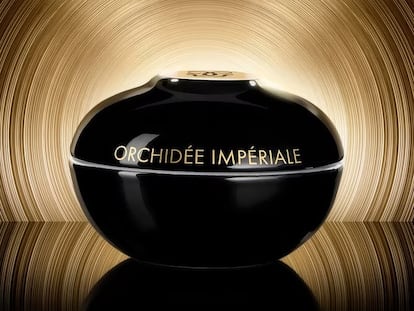How much did you say it costs, $40,000? I’ll take it!
Luxury buyers are becoming younger thanks to social media, installment payments and resale platforms; they devour classic and exclusive articles whose greatest appeal is the fact that they are expensive

The day in June 2020 when it reopened its store in Guangzhou, China, after the Covid-19 restrictions were lifted, Hermès generated sales of approximately $2.6 million in eight hours, breaking all luxury records. In only 10 months they had recovered their pre-pandemic levels, regardless of the fact that their prices had risen 5% – an increase that, on the other hand, is one of the lowest in the sector, at a time when it seems that the prestige and level of desire generated by certain items is measured by the amount of zeros on their price tags. Just a few weeks ago, the long-awaited return to fashion of Phoebe Philo, the former creative director of Celine, resulted in a collection that among other things included $13,000 wool coats and $7,000 plain leather bags that, to boot, can only be purchased online.
Luxury has shattered all pre-pandemic records. LVMH, the conglomerate that owns brands such as Dior, Celine and Louis Vuitton, generated $85.9 billion in 2022, with fashion and accessories being the sector that grew the most, by a whopping 28%. “We have managed to ensure that our products remain desirable despite the economic and geopolitical climate,” declared its owner, Bernard Arnault, the richest man in the world. Kering, the company that owns Gucci, Balenciaga and Saint Laurent, grew 9% compared to 2021, and pocketed around $22 billion. Hermès, owned by the Dumas family, increased its turnover by 29%, reaching approximately $13 billion in 2022, and in three years it has created more than 4,500 new jobs.
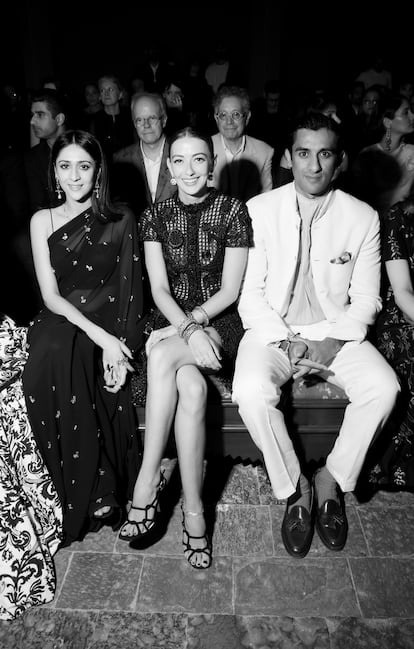
“Demand grows even if the companies continue to raise their prices. This is proven by the important resale market, which would not exist if there was no demand,” says a spokesperson for Sotheby’s, which has an increasingly thriving luxury goods section (sneakers included) that in 2021 exceeded the mark of $1 billion in sales. “Clients approach certain objects as investments that appreciate in value over time.”
The idea is not new. Already in the 19th century, the sociologist Thorstein Veblen spoke of “conspicuous consumption,” the attraction to expensive objects and experiences just because they are expensive, as a form of class distinction in capitalist societies. The novelty lies, perhaps, in how this idea is being applied in a completely new context: “Even with a possible global recession next year, the impact on the industry could be different from that of the global financial crisis of 2008. The luxury market seems to be better prepared, as its consumer base is broader and more concentrated,” explains Claudia D’ Arpizio, head of fashion and luxury at the consulting firm Bain & Co.
“Over the last decade, we have seen significant changes in the profile of the watch customer. In the past, the purchase of luxury watches was mainly linked to an older audience and experienced collectors. However, in recent years there has been a noticeable shift towards a younger audience, due to the influence of social media and the collaborations with other brands,” explains Marta Gracia, country manager of the luxury watch brand IWC in Spain. This exclusive segment also skyrocketed its sales, reaching an estimated volume of $32.5 billion. Gracia explains that rather than being experts in the subject, today’s clientele is motivated by a mix of “craftsmanship, exclusivity and a unique, recognizable design.”
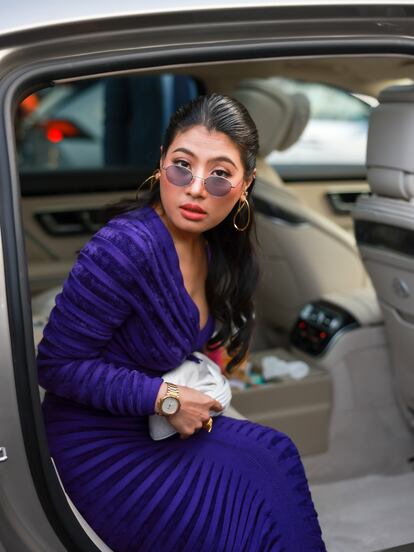
In 2023, a curious paradox is driving luxury and its clientele to change the dynamics that have operated in this sector over the last 20 years. Journalist and writer Dana Thomas predicted it in 2007 in her book Deluxe: How Luxury Lost its Luster: when a brand makes billions because it sells hundreds of thousands of products, she wrote, it will cease to be luxury. At that time, any Western brand product (conveniently screen-printed with the proper logo) was consumed with fervor in China, and huge billboards advertising four-figure handbags began to appear on the streets of the country’s main cities. Now, Thomas’ prophecy has been fulfilled: social media has turned unaffordable bags, shoes or jewelry into an entertainment product. It is no coincidence, then, that in a context in which everything is potentially viral and can be paid in installments and resold on specialized platforms, class distinction, the foundation on which the concept of luxury is based, is being reinforced in a not-so-unexpected way.
Today, there are more millionaires than ever, because wealth is increasingly unequally distributed: in a world in which, according to the latest Credit Suisse report, 1% of the population concentrates half of the world’s wealth and 52% of the population owns less than $10,000, luxury, in an abstract sense, is anything but democratic.
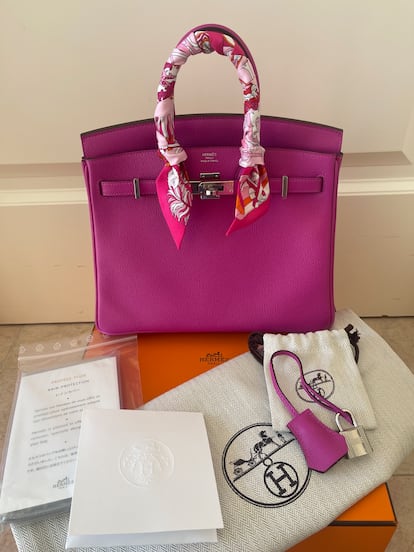
“We are currently being asked for a lot of clothing and accessories from Loro Piana and other discreet luxury brands, because they are usually out of stock,” says Lucia Badrinas, founder of Eye Luxury Concierge, a company that specializes in the purchase and sale of luxury items – but, above all, in making the wishes of their most distinguished clients come true. “We’ve often had to take a plane to go get a product and then take another one to deliver it by hand,” she explains. In fact, just over a year ago they flew to Milan to deliver Chiara Ferragni an Hermès bag with exotic leather handles; the influencer uploaded it to her social media accounts and the word spread. “The highest demand is undoubtedly for any iconic Hermès bag, which usually have a waiting list of one or two years. But if we search deeper, the most difficult thing to find would be those same bags in some exotic skin, such as crocodile or ostrich,” she explains. Her clients, many of them Latin and North American, have paid up to $43,500 for a rare piece.
And therein lies the key. China is no longer the voracious consumer of mass-produced luxury goods. According to the Bain & Co. report, Europe and the United States have recovered their relevance, accounting for half the sales of all premium items. The new luxury is younger and more Western – which is why it follows practices typical of the old luxury, that is, they consume what is unique and difficult to acquire for any mortal with an Instagram account and some savings, which in today’s digital and over-informed world translates into experiences. In recent years, companies that make the impossible possible have multiplied. It is not only about crossing the world looking for a bag; it is also about orchestrating “unique moments” for people who don’t have time – as defined by Black Tomato, one of the many travel agencies for millionaires that have appeared in recent years and that, among other unique moments, have rented penguins to surprise animal lovers on tropical islands, built temporary igloos or closed the Sistine Chapel for a family of five.
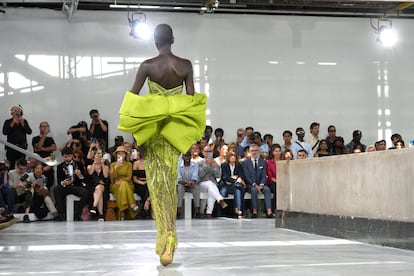
But “experience” also means investing in normal things: ordering, as if it were a book, a first edition of a legendary or centenary bag; getting a tiara (the fine jewelry market grew by 18% in 2022 alone); buying shoes at an auction house or through a dealer, as if it were a work of art; and, above all, being pampered again in a luxury store, as before, without screens.
“What matters now is the store as an experience,” explains Giovanni Maria Castelli, the director of 19-69, a niche luxury fragrance brand; so niche, in fact, that they find their inspiration in countercultural movements. “We can only sell in stores that are different, innovative, that contribute something new,” he explains. “It is increasingly difficult to sell in a multi-brand store; you have to be very careful about the type of firms with which you share the space, and they have to be flexible with the demands of the client,” says Olivia Labella, sales manager of Herno, one of the brands that top the list of quiet luxury. When luxury has become popular, the super-luxury customer wants something absolutely individual. Hence, companies are opening hotels, spas and swimming pools for those who want to treat themselves to a very expensive whim and upload it to their social accounts, but also private rooms for that 1% who still thinks that spending five figures on a bag is an investment for the future.
Sign up for our weekly newsletter to get more English-language news coverage from EL PAÍS USA Edition
Tu suscripción se está usando en otro dispositivo
¿Quieres añadir otro usuario a tu suscripción?
Si continúas leyendo en este dispositivo, no se podrá leer en el otro.
FlechaTu suscripción se está usando en otro dispositivo y solo puedes acceder a EL PAÍS desde un dispositivo a la vez.
Si quieres compartir tu cuenta, cambia tu suscripción a la modalidad Premium, así podrás añadir otro usuario. Cada uno accederá con su propia cuenta de email, lo que os permitirá personalizar vuestra experiencia en EL PAÍS.
¿Tienes una suscripción de empresa? Accede aquí para contratar más cuentas.
En el caso de no saber quién está usando tu cuenta, te recomendamos cambiar tu contraseña aquí.
Si decides continuar compartiendo tu cuenta, este mensaje se mostrará en tu dispositivo y en el de la otra persona que está usando tu cuenta de forma indefinida, afectando a tu experiencia de lectura. Puedes consultar aquí los términos y condiciones de la suscripción digital.
More information
Archived In
Últimas noticias
Reinhard Genzel, Nobel laureate in physics: ‘One-minute videos will never give you the truth’
Pinochet’s victims grapple with José Antonio Kast’s rise in Chile
Half of Scotland is in the hands of 420 property owners
From digital curfews to blocking apps: How technology experts protect their children online
Most viewed
- Pablo Escobar’s hippos: A serious environmental problem, 40 years on
- Reinhard Genzel, Nobel laureate in physics: ‘One-minute videos will never give you the truth’
- Why we lost the habit of sleeping in two segments and how that changed our sense of time
- Charles Dubouloz, mountaineering star, retires at 36 with a farewell tour inspired by Walter Bonatti
- The Florida Keys tourist paradise is besieged by immigration agents: ‘We’ve never seen anything like this’

